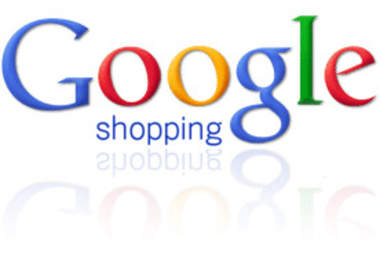Outsmart your competitors
with visibility across your market
Are you a retailer or brand?
Competitor Monitor helps you stay ahead by constantly monitoring and analysing competitor products, prices & customer reviews.
TRY IT NOW
 It’s almost an unwritten law of ecommerce that when Google shifts policies, the ripples are felt through every corner of the world. Eventually, however, the shock fades and retailers quickly adapt to the new system. Last year’s evolution of Google Product Search into Google Shopping is a perfect example of this phenomenon, and one that wound up creating a much better ecommerce experience for consumers. The main perk, as with any data-oriented system, is the potential for customisation. There are many different ways the retailers can take advantage of the new system, but we’ll look through a few of the best ways to maximise your results with Google Shopping for the upcoming year.
It’s almost an unwritten law of ecommerce that when Google shifts policies, the ripples are felt through every corner of the world. Eventually, however, the shock fades and retailers quickly adapt to the new system. Last year’s evolution of Google Product Search into Google Shopping is a perfect example of this phenomenon, and one that wound up creating a much better ecommerce experience for consumers. The main perk, as with any data-oriented system, is the potential for customisation. There are many different ways the retailers can take advantage of the new system, but we’ll look through a few of the best ways to maximise your results with Google Shopping for the upcoming year.
One of the most important things to consider for retailers working with Google Shopping is that all listings on the service accurately reflect any changes that are made on your website. This is not merely good practice; Google may temporarily suspend your account or completely remove your listings from the system. Fortunately, updating data is fairly easy through Google product feeds.
The next critical element to consider is which keywords you choose to target with your listings. This is where any retailer who’s been carefully tracking their own sales data can really shine. By accurately matching your ads and targets to the intents of searches, rather than simple keyword matches, you can dramatically improve the click-through and conversion rates associated with your ads, which will result in a large net benefit on the bottom line. If you haven’t been tracking your keyword targets as diligently as you could have been, it may require a larger initial investment of both money and analytics time to determine your optimal targets.
When you’re preparing your ad listings, known as Google Product Listing Ads (or PLAs for short), be sure to include the words and phrases that you’ve been using as PPC keywords in your other campaigns. Instead of targeting the keywords explicitly, as in an Adwords campaign, PLAs use your product descriptions and titles as a means of determining relevancy.
Try to put yourself in the mind of a shopper when you’re crafting these sections, as they can be the make-or-break elements of your success. As with any Google listings, ensuring a decent click-through rate can be accomplished by making your listing stand out from the rest. In this case, eye-catching high quality imagery and specific promotional text can be leveraged to boost your CTR, so choose these just as carefully as your product titles and descriptions.
Finally, as with any data-based system, it’s absolutely crucial to track, test, and optimize your listings. Google provides excellent tools for comparing the relative merits of different listings, so be sure to take advantage of the tools to make sure you’re not leaving money on the table!
 It’s almost an unwritten law of ecommerce that when Google shifts policies, the ripples are felt through every corner of the world. Eventually, however, the shock fades and retailers quickly adapt to the new system. Last year’s evolution of Google Product Search into Google Shopping is a perfect example of this phenomenon, and one that wound up creating a much better ecommerce experience for consumers. The main perk, as with any data-oriented system, is the potential for customisation. There are many different ways the retailers can take advantage of the new system, but we’ll look through a few of the best ways to maximise your results with Google Shopping for the upcoming year.
It’s almost an unwritten law of ecommerce that when Google shifts policies, the ripples are felt through every corner of the world. Eventually, however, the shock fades and retailers quickly adapt to the new system. Last year’s evolution of Google Product Search into Google Shopping is a perfect example of this phenomenon, and one that wound up creating a much better ecommerce experience for consumers. The main perk, as with any data-oriented system, is the potential for customisation. There are many different ways the retailers can take advantage of the new system, but we’ll look through a few of the best ways to maximise your results with Google Shopping for the upcoming year.